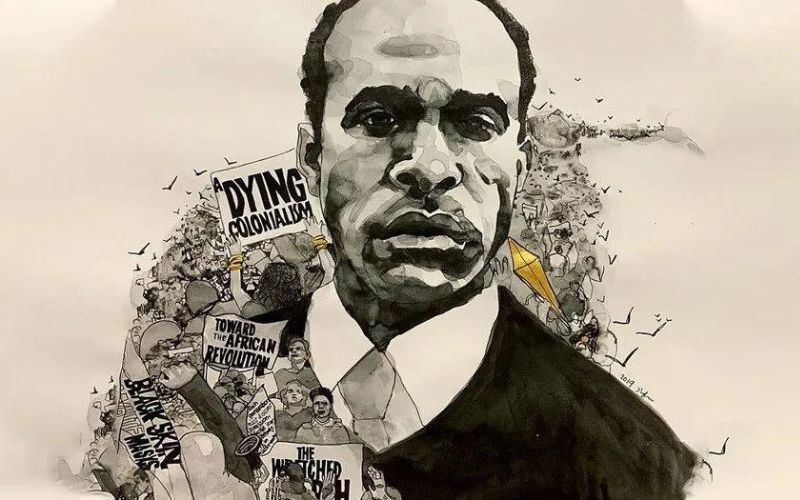The growing number of gated communities in our nation is but one example of the obsession with safety. With guards at the gate, individuals still have bars and elaborate internal security systems. Americans spend more than thirty billion dollars a year on security. When I have stayed with friends in these communities and inquired as to whether all the security is in response to an actual danger I am told “not really," that it is the fear of threat rather than a real threat that is the catalyst for an obsession with safety that borders on madness.
Culturally we bear witness to this madness every day. We can all tell endless stories of how it makes itself known in everyday life. For example, an adult white male answers the door when a young Asian male rings the bell. We live in a culture where without responding to any gesture of aggression or hostility on the part of the stranger, who is simply lost and trying to find the correct address, the white male shoots him, believing he is protecting his life and his property. This is an everyday example of madness. The person who is really the threat here is the home owner who has been so well socialized by the thinking of white supremacy, of capitalism, of patriarchy that he can no longer respond rationally.
White supremacy has taught him that all people of color are threats irrespective of their behavior. Capitalism has taught him that, at all costs, his property can and must be protected. Patriarchy has taught him that his masculinity has to be proved by the willingness to conquer fear through aggression; that it would be unmanly to ask questions before taking action. Mass media then brings us the news of this in a newspeak manner that sounds almost jocular and celebratory, as though no tragedy has happened, as though the sacrifice of a young life was necessary to uphold property values and white patriarchal honor. Viewers are encouraged feel sympathy for the white male home owner who made a mistake. The fact that this mistake led to the violent death of an innocent young man does not register; the narrative is worded in a manner that encourages viewers to identify with the one who made the mistake by doing what we are led to feel we might all do to “protect our property at all costs from any sense of perceived threat. " This is what the worship of death looks like.
~ bell hooks, All About Love: New Visions
Non Fiction
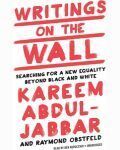
Abdul-Jabbar, Kareem and Obstfeld, Raymond. Writings on the Wall: Searching for a New Equality Beyond Black and White (TIME, 2016).
Bestselling author, basketball legend and cultural commentator Kareem Abdul-Jabbar explores the heart of issues that affect Americans today.
Since retiring from professional basketball as the NBA's all-time leading scorer, six-time MVP, and Hall of Fame inductee, Kareem Abdul-Jabbar has become a lauded observer of culture and society, a New York Times bestselling author, and a regular contributor to The Washington Post, TIME magazine and TIME.com.
He now brings that keen insight to the fore in Writings on the Wall: Searching for a New Equality Beyond Black and White, his most incisive and important work of non-fiction in years. He uses his unique blend of erudition, street smarts and authentic experience in essays on the country's seemingly irreconcilable partisan divide - both racial and political, parenthood, and his own experiences as an athlete, African-American, and a Muslim.
The book is not just a collection of expositions; he also offers keen assessments of and solutions to problems such as racism in sports while speaking candidly about his experiences on the court and off.
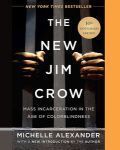
Alexander, Michelle. The New Jim Crow: Mass Incarceration in the Age of Colorblindness (The New Press, 2012).
The New Jim Crow: Mass Incarceration in the Age of Colorblindness is a book by Michelle Alexander, a civil rights litigator and legal scholar. The book discusses race-related issues specific to African-American males and mass incarceration in the United States, but Alexander notes that the discrimination faced by African-American males is prevalent among other minorities and socio-economically disadvantaged populations.
Alexander's central premise, from which the book derives its title, is that "mass incarceration is, metaphorically, the New Jim Crow."
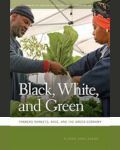
Alkon, Alison and Cowen, Deborah. Black, White, and Green: Farmers Markets, Race, and the Green Economy (University of Georgia Press, 2012).
Farmers markets are much more than places to buy produce. According to advocates for sustainable food systems, they are also places to “vote with your fork” for environmental protection, vibrant communities, and strong local economies. Farmers markets have become essential to the movement for food-system reform and are a shining example of a growing green economy where consumers can shop their way to social change.
Black, White, and Green brings new energy to this topic by exploring dimensions of race and class as they relate to farmers markets and the green economy. With a focus on two Bay Area markets―one in the primarily white neighborhood of North Berkeley, and the other in largely black West Oakland―Alison Hope Alkon investigates the possibilities for social and environmental change embodied by farmers markets and the green economy.
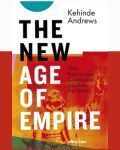
Andrews, Kehinde. The New Age of Empire: How Racism and Colonialism Still Rule the World (Bold Type Books, 2021).
Andrews takes the reader from genocide to slavery to colonialism, deftly explaining the histories of these phenomena, how their justifications are linked, and how they continue to shape our world to this day. The New Age of Empire is a damning indictment of white-centered ideologies from Marxism to neoliberalism, and a reminder that our histories are never really over.

Baptist, Edward E. The Half Has Never Been Told: Slavery and the Making of American Capitalism (Basic Books, 2014).
Americans tend to cast slavery as a pre-modern institution—the nation’s original sin, perhaps, but isolated in time and divorced from America’s later success. But to do so robs the millions who suffered in bondage of their full legacy. As historian Edward Baptist reveals in The Half Has Never Been Told, the expansion of slavery in the first eight decades after American independence drove the evolution and modernization of the United States.
In the span of a single lifetime, the South grew from a narrow coastal strip of worn-out tobacco plantations to a continental cotton empire, and the United States grew into a modern, industrial, and capitalist economy. Until the Civil War, Baptist explains, the most important American economic innovations were ways to make slavery ever more profitable.
Through forced migration and torture, slave owners extracted continual increases in efficiency from enslaved African Americans. Thus the United States seized control of the world market for cotton, the key raw material of the Industrial Revolution, and became a wealthy nation with global influence. Told through intimate slave narratives, plantation records, newspapers, and the words of politicians, entrepreneurs, and escaped slaves, The Half Has Never Been Told offers a radical new interpretation of American history.
It forces readers to reckon with the violence at the root of American supremacy, but also with the survival and resistance that brought about slavery’s end—and created a culture that sustains America’s deepest dreams of freedom.
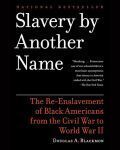
Blackmon, Douglas. Slavery by Another Name: The Re-Enslavement of Black Americans from the Civil War to World War II (Anchor, 2009).
In this groundbreaking historical expose, Douglas A. Blackmon brings to light one of the most shameful chapters in American history—an “Age of Neoslavery” that thrived from the aftermath of the Civil War through the dawn of World War II.
Using a vast record of original documents and personal narratives, Douglas A. Blackmon unearths the lost stories of slaves and their descendants who journeyed into freedom after the Emancipation Proclamation and then back into the shadow of involuntary servitude shortly thereafter. By turns moving, sobering, and shocking, this unprecedented account reveals the stories of those who fought unsuccessfully against the re-emergence of human labor trafficking, the companies that profited most from neoslavery, and the insidious legacy of racism that reverberates today.
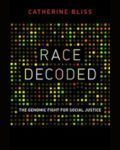
Bliss, Catherine. Race Decoded: The Genomic Fight for Social Justice (Stanford University Press, 2012).
In 2000, with the success of the Human Genome Project, scientists declared the death of race in biology and medicine. But within five years, many of these same scientists had reversed course and embarked upon a new hunt for the biological meaning of race.
Drawing on personal interviews and life stories, Race Decoded takes us into the world of elite genome scientists—including Francis Collins, director of the NIH; Craig Venter, the first person to create a synthetic genome; and Spencer Wells, National Geographic Society explorer-in-residence, among others—to show how and why they are formulating new ways of thinking about race.

Boyle, Kevin. Arc of Justice: A Saga of Race, Civil Rights, and Murder in the Jazz Age (Holt Paperbacks, 2005).
In 1925, Detroit was a smoky swirl of jazz and speakeasies, assembly lines and fistfights. The advent of automobiles had brought workers from around the globe to compete for manufacturing jobs, and tensions often flared with the KKK in ascendance and violence rising. Ossian Sweet, a proud Negro doctor-grandson of a slave-had made the long climb from the ghetto to a home of his own in a previously all-white neighborhood. Yet just after his arrival, a mob gathered outside his house; suddenly, shots rang out: Sweet, or one of his defenders, had accidentally killed one of the whites threatening their lives and homes.
And so it began-a chain of events that brought America's greatest attorney, Clarence Darrow, into the fray and transformed Sweet into a controversial symbol of equality.
Historian Kevin Boyle weaves the police investigation and courtroom drama of Sweet's murder trial into an unforgettable tapestry of narrative history that documents the volatile America of the 1920s and movingly re-creates the Sweet family's journey from slavery through the Great Migration to the middle class. Ossian Sweet's story, so richly and poignantly captured here, is an epic tale of one man trapped by the battles of his era's changing times.

Calderon, Jose Z. and Eisman, Gerald S. Race, Poverty, and Social Justice: Multidisciplinary Perspectives Through Service Learning (Stylus Publishing, 2007).
This volume explores multiple examples of how to connect classrooms to communities through service learning and participatory research to teach issues of social justice. The various chapters provide examples of how collaborations between students, faculty, and community partners are creating models of democratic spaces (on campus and off campus) where the students are teachers and the teachers are students.
The purpose of this volume is to provide examples of how service learning can be integrated into courses addressing social justice issues. At the same time, it is about demonstrating the power of service learning in advancing a course content that is community-based and socially engaged.
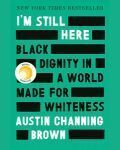
Channing Brown, Austin. I'm Still Here: Black Dignity in a World Made for Whiteness (Convergent Books, 2018).
From a leading voice on racial justice, an eye-opening account of growing up Black, Christian, and female that exposes how white America’s love affair with “diversity” so often falls short of its ideals. I’m Still Here is an illuminating look at how white, middle-class, Evangelicalism has participated in an era of rising racial hostility, inviting the reader to confront apathy, recognize God’s ongoing work in the world, and discover how blackness—if we let it—can save us all.
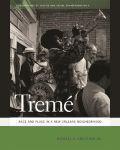
Crutcher Jr., Michael and Herod, Andrew. Tremé: Race and Place in a New Orleans Neighborhood (University of Georgia Press, 2010).
Across Rampart Street from the French Quarter, the Faubourg Tremé neighborhood is arguably the most important location for African American culture in New Orleans. Closely associated with traditional jazz and “second line” parading, Tremé is now the setting for an eponymous television series created by David Simon (best known for his work on The Wire).
Michael Crutcher argues that Tremé’s story is essentially spatial―a story of how neighborhood boundaries are drawn and take on meaning and of how places within neighborhoods are made and unmade by people and politics. Tremé has long been sealed off from more prominent parts of the city, originally by the fortified walls that gave Rampart Street its name, and so has become a refuge for less powerful New Orleanians. This notion of Tremé as a safe haven―the flipside of its reputation as a “neglected” place―has been essential to its role as a cultural incubator, Crutcher argues, from the antebellum slave dances in Congo Square to jazz pickup sessions at Joe’s Cozy Corner.
Tremé takes up a wide range of issues in urban life, including highway construction, gentrification, and the role of public architecture in sustaining collective memory. Equally sensitive both to black-white relations and to differences within the African American community, it is a vivid evocation of one of America’s most distinctive places.
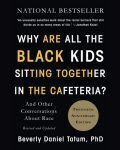
Daniel Tatum, Beverly. Why Are All the Black Kids Sitting Together in the Cafeteria?: And Other Conversations About Race (Basic Books, 2017)
Walk into any racially mixed high school and you will see Black, White, and Latino youth clustered in their own groups. Is this self-segregation a problem to address or a coping strategy? Beverly Daniel Tatum, a renowned authority on the psychology of racism, argues that straight talk about our racial identities is essential if we are serious about enabling communication across racial and ethnic divides. These topics have only become more urgent as the national conversation about race is increasingly acrimonious. This fully revised edition is essential reading for anyone seeking to understand the dynamics of race in America.
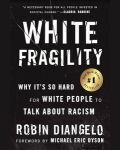
DiAngelo, Robin J. White Fragility: Why It's So Hard for White People to Talk About Racism (Beacon Press, 2018).
Referring to the defensive moves that white people make when challenged racially, white fragility is characterized by emotions such as anger, fear, and guilt, and by behaviors including argumentation and silence. These behaviors, in turn, function to reinstate white racial equilibrium and prevent any meaningful cross-racial dialogue. In this in-depth exploration, DiAngelo examines how white fragility develops, how it protects racial inequality, and what we can do to engage more constructively.
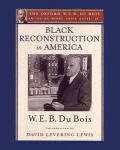
Du Bois, W.E.B. Black Reconstruction in America: An Essay Toward a History of the Part Which Black Folk Played in the Attempt to Reconstruct Democracy in America, 1860–1880 (1935).
A history of the Reconstruction era by W. E. B. Du Bois, first published in 1935. It marked a significant break with the standard academic view of Reconstruction at the time, marked by the Dunning School, which contended that the period was a failure and downplayed the contributions of African Americans.
Du Bois argued directly against these accounts, emphasizing the role and agency of blacks during the Civil War and Reconstruction and framing it as a period which held promise for an worker-ruled democracy to replace a slavery-based plantation economy. He noted that the southern working class, i.e. black freedmen and poor whites, were divided after the Civil War along the lines of race, and did not unite against the white propertied class, i.e. the former planters. He believed this failure enabled the white Democrats to regain control of state legislatures, pass Jim Crow laws, and disfranchise most blacks and many poor whites in the late 19th and early 20th centuries.
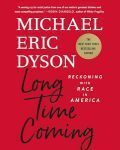
Dyson, Michael Eric. Long Time Coming: Reckoning with Race in America (St. Martin's Press, 2020).
Long Time Coming grapples with the cultural and social forces that have shaped our nation in the brutal crucible of race. In five beautifully argued chapters―each addressed to a black martyr from Breonna Taylor to Rev. Clementa Pinckney―Dyson traces the genealogy of anti-blackness from the slave ship to the street corner where Floyd lost his life―and where America gained its will to confront the ugly truth of systemic racism. Ending with a poignant plea for hope, Dyson’s exciting new book points the way to social redemption.
Long Time Coming is a necessary guide to help America finally reckon with race.
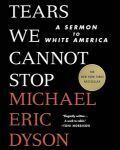
Dyson, Michael Eric. Tears We Cannot Stop: A Sermon to White America (St. Martin's Press, 2017).
Short, emotional, literary, powerful―Tears We Cannot Stop is the book that all Americans who care about the current and long-burning crisis in race relations will want to read. As the country grapples with racist division at a level not seen since the 1960s, one man's voice soars above the rest with conviction and compassion.
In his 2016 New York Times op-ed piece "Death in Black and White," Michael Eric Dyson moved a nation. Now he continues to speak out in Tears We Cannot Stop―a provocative and deeply personal call for change. Dyson argues that if we are to make real racial progress we must face difficult truths, including being honest about how black grievance has been ignored, dismissed, or discounted.
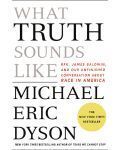
Dyson, Michael Eric. What Truth Sounds Like: Robert F. Kennedy, James Baldwin, and Our Unfinished Conversation About Race in America (St. Martin's Press, 2018).
What Truth Sounds Like exists at the tense intersection of the conflict between politics and prophecy – of whether we embrace political resolution or moral redemption to fix our fractured racial landscape. The future of race and democracy hang in the balance.

Gabbidon, Shaun L. and Greene, Helen Taylor. Race and Crime (Sage Publications, Inc, 2008).
A compelling analysis of the issues of race and crime in both a historical and contemporary context, Race and Crime is a core text for upper level undergraduates and graduate students taking courses in Race Relations; Race and Ethnicity; and Minorities, Race, Gender and Class in departments of sociology, ethnic studies or black studies.
The Second Edition of this popular text examines the history of how racial and ethnic groups intersect with the U.S. criminal justice system, and investigates key contemporary issues relevant to understanding the current state of race/ethnicity and crime in the United States.
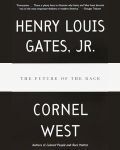
Gates Jr., Henry Louis and West, Cornel. The Future of the Race (Vintage, 1997).
Almost one-hundred years ago, W.E.B. Du Bois proposed the notion of the "talented tenth," an African American elite that would serve as leaders and models for the larger black community.
In this unprecedented collaboration, Henry Louis Gates, Jr., and Cornel West--two of Du Bois's most prominent intellectual descendants--reassess that relationship and its implications for the future of black Americans. If the 1990s are the best of times for the heirs of the Talented Tenth, they are unquestionably worse for the growing black underclass. As they examine the origins of this widening gulf and propose solutions for it, Gates and West combine memoir and biography, social analysis and cultural survey into a book that is incisive and compassionate, cautionary and deeply stirring.

Glaude, Eddie S. Jr. Begin Again: James Baldwin's America and Its Urgent Lessons for Our Own (Crown, 2020).
In these brilliant and stirring pages, Glaude finds hope and guidance in Baldwin as he mixes biography—drawn partially from newly uncovered Baldwin interviews—with history, memoir, and poignant analysis of our current moment to reveal the painful cycle of Black resistance and white retrenchment.
As Glaude bears witness to the difficult truth of racism’s continued grip on the national soul, Begin Again is a searing exploration of the tangled web of race, trauma, and memory, and a powerful interrogation of what we must ask of ourselves in order to call forth a new America.

Gooden, Susan T. Race and Social Equity: A Nervous Area of Government (Routledge, 2014).
In this compelling book the author contends that social equity--specifically racial equity--is a nervous area of government.
Over the course of history, this nervousness has stifled many individuals and organizations, thus leading to an inability to seriously advance the reduction of racial inequities in government. The author asserts that until this nervousness is effectively managed, public administration social equity efforts designed to reduce racial inequities cannot realize their full potential.

Gordon Nembhard, Jessica. Collective Courage: A History of African American Cooperative Economic Thought and Practice (The Pennsylvania State University Press, 2014).
In Collective Courage, Jessica Gordon Nembhard chronicles African American cooperative business ownership and its place in the movements for Black civil rights and economic equality. Not since W. E. B. Du Bois’s 1907 Economic Co-operation Among Negro Americans has there been a full-length, nationwide study of African American cooperatives. Collective Courage extends that story into the twenty-first century.
Many of the players are well known in the history of the African American experience: Du Bois, A. Philip Randolph and the Ladies' Auxiliary to the Brotherhood of Sleeping Car Porters, Nannie Helen Burroughs, Fannie Lou Hamer, Ella Jo Baker, George Schuyler and the Young Negroes’ Co-operative League, the Nation of Islam, and the Black Panther Party. Adding the cooperative movement to Black history results in a retelling of the African American experience, with an increased understanding of African American collective economic agency and grassroots economic organizing.
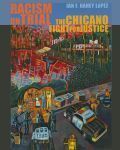
Haney Lopez, Ian F. Racism on Trial: The Chicano Fight for Justice (Belknap Press, 2003).
In 1968, ten thousand students marched in protest over the terrible conditions prevalent in the high schools of East Los Angeles, the largest Mexican community in the United States. Chanting "Chicano Power," the young insurgents not only demanded change but heralded a new racial politics. Frustrated with the previous generation's efforts to win equal treatment by portraying themselves as racially white, the Chicano protesters demanded justice as proud members of a brown race. The legacy of this fundamental shift continues to this day.
Ian Haney López tells the compelling story of the Chicano movement in Los Angeles by following two criminal trials, including one arising from the student walkouts. He demonstrates how racial prejudice led to police brutality and judicial discrimination that in turn spurred Chicano militancy. He also shows that legal violence helped to convince Chicano activists that they were nonwhite, thereby encouraging their use of racial ideas to redefine their aspirations, culture, and selves. In a groundbreaking advance that further connects legal racism and racial politics, Haney López describes how race functions as "common sense," a set of ideas that we take for granted in our daily lives. This racial common sense, Haney López argues, largely explains why racism and racial affiliation persist today.
By tracing the fluid position of Mexican Americans on the divide between white and nonwhite, describing the role of legal violence in producing racial identities, and detailing the commonsense nature of race, Haney López offers a much needed, potentially liberating way to rethink race in the United States.
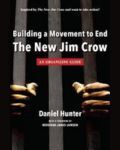
Hunter, Daniel. Building a Movement to End the New Jim Crow: an organizing guide (Hyrax Publishing, 2015).
Expanding on the call to action in Michelle Alexander's acclaimed best-seller, The New Jim Crow, this accessible organizing guide puts tools in your hands to help you and your group understand how to make meaningful, effective change.
Learn about your role in movement-building and how to pick and build campaigns that contribute towards a bigger mass movement against the largest penal system in the world. This important new resource offers examples from this and other movements, time-tested organizing techniques, and vision to inspire, challenge, and motivate.
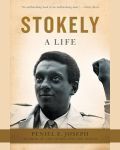
Joseph, Peniel E. Stokely: A Life (Basic Civitas Books, 2014).
Stokely Carmichael, the charismatic and controversial black activist, stepped onto the pages of history when he called for “Black Power” during a speech one Mississippi night in 1966.
A firebrand who straddled both the American civil rights and Black Power movements, Carmichael would stand for the rest of his life at the center of the storm he had unleashed that night. In Stokely, preeminent civil rights scholar Peniel E. Joseph presents a groundbreaking biography of Carmichael, using his life as a prism through which to view the transformative African American freedom struggles of the twentieth century.
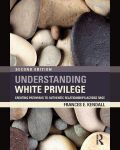
Kendall, Frances E. Understanding White Privilege: Creating Pathways to Authentic Relationships Across Race (Routledge, 2012).
Knowingly and unknowingly we all grapple with race every day. Understanding White Privilege delves into the complex interplay between race, power, and privilege in both organizations and private life. It offers an unflinching look at how ignorance can perpetuate privilege, and offers practical and thoughtful insights into how people of all races can work to break this cycle.
Based on thirty years of work in diversity and colleges, universities, and corporations, Frances Kendall candidly invites readers to think personally about how race ― theirs and others’ ― frames experiences and relationships, focusing squarely on white privilege and its implications for building authentic relationships across race.

Kendi, Ibram X. How to Be an Antiracist (One World, 2019).
Antiracism is a transformative concept that reorients and reenergizes the conversation about racism—and, even more fundamentally, points us toward liberating new ways of thinking about ourselves and each other.
In How to Be an Antiracist, Kendi takes readers through a widening circle of antiracist ideas—from the most basic concepts to visionary possibilities—that will help readers see all forms of racism clearly, understand their poisonous consequences, and work to oppose them in our systems and in ourselves.

Kivel, Paul. Uprooting Racism: How White People Can Work for Racial Justice (New Society Publishers, 2011).
In 2008 the United States elected its first black president, and recent polls show that only twenty-two percent of white people in the United States believe that racism is a major societal problem. On the surface, it may seem to be in decline. However, the evidence of discrimination persists throughout our society. Segregation and inequalities in education, housing, health care, and the job market continue to be the norm. Post 9/11, increased insecurity and fear have led to an epidemic of the scapegoating and harassment of people of color.
Uprooting Racism offers a framework for understanding institutional racism. It provides practical suggestions, tools, examples, and advice on how white people can intervene in interpersonal and organizational situations to work as allies for racial justice. Completely revised and updated, this expanded third edition directly engages the reader through questions, exercises, and suggestions for action, and takes a detailed look at current issues such as affirmative action, immigration, and health care. It also includes a wealth of information about specific cultural groups such as Muslims, people with mixed-heritage, Native Americans, Jews, recent immigrants, Asian Americans, and Latinos.
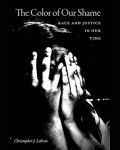
Lebron, Christopher J. The Color of Our Shame: Race and Justice in Our Time (Oxford University Press, 2015).
For many Americans, the election of Barack Obama as the country's first black president signaled that we had become a post-racial nation - some even suggested that race was no longer worth discussing. Of course, the evidence tells a very different story. And while social scientists are fully engaged in examining the facts of race, normative political thought has failed to grapple with race as an interesting moral case or as a focus in the expansive theory of social justice. Political thought's under participation in the debate over the status of blacks in American society raises serious concerns since the main academic task of political theory is to adjudicate discrepancies between the demands of ideal justice and social realities.
Christopher J. Lebron contends that it is the duty of political thought to address the moral problems that attend racial inequality and to make those problems salient to a democratic polity. Thus, in The Color of Our Shame, he asks two major questions. First, given the success of the Civil Rights Act and the sharp decline in overt racist norms, how can we explain the persistence of systemic racial inequality? Second, once we have settled on an explanation, what might political philosophy have to offer in terms of a solution?
In order to answer these questions Lebron suggests that we reconceive of racial inequality as a condition that marks the normative status of black citizens in the eyes of the nation. He argues that our collective response to racial inequality ought to be shame. While we reject race as a reason for marginalizing blacks on the basis of liberal democratic ideals, we fail to live up to those ideals - a situation that Lebron sees as a failure of national character. Drawing on a wide array of resources including liberal theory, virtue ethics, history, and popular culture, Lebron proposes a move toward a "perfectionist politics" that would compel a higher level of racially relevant moral excellence from individuals and institutions and enable America to meet the democratic ideals that it has set for itself.
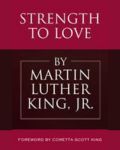
Martin Luther King, Jr. Strength to Love (Augsburg Fortress, 1963).
The remarkable courage and deep conviction of Martin Luther King Jr. live on in this classic prophetic text, a veritable primer in the principles and practice of nonviolence.
Despite nearly fifty years since its publication, Strength to Love reads as pertinently to our situation as it did in the midst of the civil rights movement. Yet Strength to Love is more than a blueprint of a movement; it is a template for personal authenticity in an age when vast social and economic change demand and depend on personal integrity. As King averred, "Only through an inner spiritual transformation do we gain the strength to fight vigorously the evils of the world in a humble and loving spirit." This brief classic holds the key to that transformation.

Massingale, Bryan N. Racial Justice and the Catholic Church (Orbis Books, 2010).
Here, a leading black Catholic moral theologian addresses the thorny issue of racial justice past and present. Massingale writes from an abiding conviction that the Catholic faith and the black experience make essential contributions in the continuing struggle against racial injustice that is the work of all people.
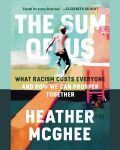
McGhee, Heather. The Sum of Us: What Racism Costs Everyone and How We Can Prosper Together (One World 2021).
McGhee embarks on a deeply personal journey across the country from Maine to Mississippi to California, tallying what we lose when we buy into the zero-sum paradigm—the idea that progress for some of us must come at the expense of others. Along the way, she meets white people who confide in her about losing their homes, their dreams, and their shot at better jobs to the toxic mix of American racism and greed.
This is the story of how public goods in this country—from parks and pools to functioning schools—have become private luxuries; of how unions collapsed, wages stagnated, and inequality increased; and of how this country, unique among the world’s advanced economies, has thwarted universal healthcare. But in unlikely places of worship and work, McGhee finds proof of what she calls the Solidarity Dividend: gains that come when people come together across race, to accomplish what we simply can’t do on our own.
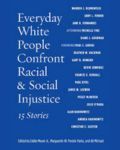
Moore, Eddie and Penick-Parks, Marguerite W. Everyday White People Confront Racial and Social Injustice: 15 Stories (Stylus Publishing, 2015).
While we are all familiar with the lives of prominent Black civil rights leaders, few of us have a sense of what is entailed in developing a White anti-racist identity. Few of us can name the White activists who joined the struggle against discrimination, let alone understand the complexities, stresses and contradictions of doing this work while benefiting from the privileges they enjoyed as Whites.
This book fills that gap by vividly presenting – in their own words – the personal stories, experiences and reflections of fifteen prominent White anti-racists. They recount the circumstances that led them to undertake this work, describe key moments and insights along their journeys, and frankly admit their continuing lapses and mistakes. They make it clear that confronting oppression (including their own prejudices) – whether about race, sexual orientation, ability or other differences – is a lifelong process of learning.

Morgan, Edmund S. American Slavery, American Freedom (W. W. Norton & Company, 2003).
In the American Revolution, Virginians were the most eloquent spokesmen for freedom and quality. George Washington led the Americans in battle against British oppression. Thomas Jefferson led them in declaring independence. Virginians drafted not only the Declaration but also the Constitution and the Bill of Rights; they were elected to the presidency of the United States under that Constitution for thirty-two of the first thirty-six years of its existence. They were all slaveholders. In the new preface Edmund S. Morgan writes: "Human relations among us still suffer from the former enslavement of a large portion of our predecessors.
The freedom of the free, the growth of freedom experienced in the American Revolution depended more than we like to admit on the enslavement of more than 20 percent of us at that time. How republican freedom came to be supported, at least in large part, by its opposite, slavery, is the subject of this book.
American Slavery, American Freedom is a study of the tragic contradiction at the core of America. Morgan finds the keys to this central paradox, "the marriage of slavery and freedom," in the people and the politics of the state that was both the birthplace of the Revolution and the largest slaveholding state in the country.
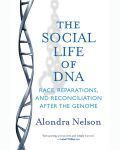
Nelson, Alondra. The Social Life of DNA: Race, Reparations, and Reconciliation After the Genome (Beacon Press, 2016).
We know DNA is a master key that unlocks medical and forensic secrets, but its genealogical life is both revelatory and endlessly fascinating. Tracing genealogy is now the second-most popular hobby amongst Americans, as well as the second-most visited online category. This billion-dollar industry has spawned popular television shows, websites, and Internet communities, and a booming heritage tourism circuit.
The tsunami of interest in genetic ancestry tracing from the African American community has been especially overwhelming. In The Social Life of DNA, Alondra Nelson takes us on an unprecedented journey into how the double helix has wound its way into the heart of the most urgent contemporary social issues around race.
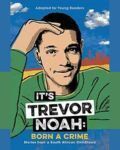
Noah, Trevor. Born a Crime: Stories from a South African Childhood (One World, 2016).
Born a Crime is the story of a mischievous young boy who grows into a restless young man as he struggles to find himself in a world where he was never supposed to exist. It is also the story of that young man’s relationship with his fearless, rebellious, and fervently religious mother—his teammate, a woman determined to save her son from the cycle of poverty, violence, and abuse that would ultimately threaten her own life.
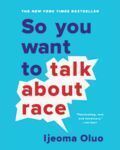
Oluo, Ijeoma. So You Want to Talk About Race (Seal Press, 2018).
In So You Want to Talk About Race, Ijeoma Oluo guides readers of all races through subjects ranging from intersectionality and affirmative action to "model minorities" in an attempt to make the seemingly impossible possible: honest conversations about race and racism, and how they infect almost every aspect of American life.
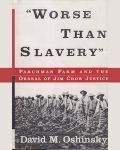
Oshinsky, David M. Worse than Slavery: Parchman Farm and the Ordeal of Jim Crow Justice (Free Press, 1997).
In this sensitively told tale of suffering, brutality, and inhumanity, Worse Than Slavery is an epic history of race and punishment in the deepest South from emancipation to the civil rights era—and beyond. Immortalized in blues songs and movies like Cool Hand Luke and The Defiant Ones, Mississippi’s infamous Parchman State Penitentiary was, in the pre-civil rights south, synonymous with cruelty.
Now, noted historian David Oshinsky gives us the true story of the notorious prison, drawing on police records, prison documents, folklore, blues songs, and oral history, from the days of cotton-field chain gangs to the 1960s, when Parchman was used to break the wills of civil rights workers who journeyed south on Freedom Rides.
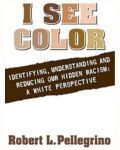
Pellegrino, Robert L. I See Color: Identifying, Understanding & Reducing Hidden Racism: A White Perspective (CreateSpace Independent Publishing Platform, 2015).
"I See Color" is a book that deals directly with the issue of race relations between Blacks and whites. It chronicles the white author's journey to educating himself on the issue of race through personal relationships, experiences and studies. It provides a blueprint needed for America to reach its final goal of equality between the races. It details common issues with white liberal thinking and provides both analysis and solutions to reduce the hidden, and often unconscious, racism therein. As America continues to struggle with the issue of race, "I See Color" builds a bridge for white people to cross to help end this struggle. The book engages white readers on a personal, not scholarly or theoretical, level. It is a must read for white people who are sincere in their desire to improve race relations in this country.
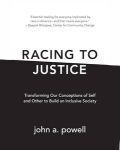
Powell, John A. Racing to Justice: Transforming Our Conceptions of Self and Other to Build an Inclusive Society (Indiana University Press, 2012).
Renowned social justice advocate John A. Powell persuasively argues that we have not achieved a post-racial society and that there is much work to do to redeem the American promise of inclusive democracy.
Culled from a decade of writing about social justice and spirituality, these meditations on race, identity, and social policy provide an outline for laying claim to our shared humanity and a way toward healing ourselves and securing our future. Racing to Justice challenges us to replace attitudes and institutions that promote and perpetuate social suffering with those that foster relationships and a way of being that transcends disconnection and separation.
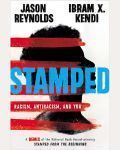
Reynolds, Jason. Stamped: Racism, Antiracism, and You: A Remix of the National Book Award-winning Stamped from the Beginning (Little Brown Books for Young Readers, 2020)
The construct of race has always been used to gain and keep power, to create dynamics that separate and silence. This remarkable reimagining of Dr. Ibram X. Kendi's National Book Award-winning Stamped from the Beginning reveals the history of racist ideas in America, and inspires hope for an antiracist future.
It takes you on a race journey from then to now, shows you why we feel how we feel, and why the poison of racism lingers. It also proves that while racist ideas have always been easy to fabricate and distribute, they can also be discredited.

Rodriguez, Roberto. Justice: A Question of Race (Bilingual Press, 1997).
On March 23, 1979, journalist Roberto Rodriguez was taking photographs of Raza cruising on Whittier Boulevard in East Los Angeles. Among the scenes he was recording was the senseless beating of an innocent and defenseless man by members of the sheriff's department. These officers then turned on Rodriguez, confiscated his camera and film, and beat him so badly that he spent three days in the Los Angeles County Hospital. He was charged with assault with a deadly weapon and assault and battery on a peace officer.
Combining material written before and after the trial, Justice: A Question of Race details Rodriguez's struggle to come to terms with this traumatic experience and to bring a civil suit against the officers involved.
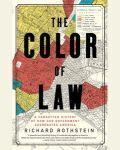
Rothstein, Richard. The Color of Law: A Forgotten History of How Our Government Segregated America (Liveright 2017).
In this groundbreaking history of the modern American metropolis, Richard Rothstein, a leading authority on housing policy, explodes the myth that America’s cities came to be racially divided through de facto segregation―that is, through individual prejudices, income differences, or the actions of private institutions like banks and real estate agencies. Rather, The Color of Law incontrovertibly makes clear that it was de jure segregation―the laws and policy decisions passed by local, state, and federal governments―that actually promoted the discriminatory patterns that continue to this day.

Saad, Layla. Me and White Supremacy: Combat Racism, Change the World, and Become a Good Ancestor (Sourcebooks, 2020).
This eye-opening book challenges you to do the essential work of unpacking your biases, and helps white people take action and dismantle the privilege within themselves so that you can stop (often unconsciously) inflicting damage on people of color, and in turn, help other white people do better, too.
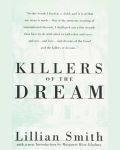
Smith, Lillian. Killers of the Dream (W. W. Norton & Company, 1994).
A Southern white writer, educator, and activist, Lillian Smith (1897–1966) spoke out all her life against injustice. In Killers of the Dream (1949), her most influential book, she draws on memories of her childhood to describe the psychological and moral cost of the powerful, contradictory rules about sin, sex, and segregation―the intricate system of taboos―that undergirded Southern society.
Published to wide controversy, it became the source (acknowledged or unacknowledged) of much of our thinking about race relations and was for many a catalyst for the civil rights movement. It remains the most courageous, insightful, and eloquent critique of the pre-1960s South.
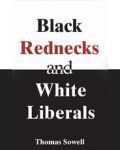
Sowell, Thomas. Black Rednecks & White Liberals (Encounter Books, 2006).
Plainly written, powerfully reasoned, and backed with a startling array of documented facts, Black Rednecks and White Liberals takes on not only the trendy intellectuals of our times but also such historic interpreters of American life as Alexis de Tocqueville and Frederick Law Olmsted.
In a series of long essays, this book presents an in-depth look at key beliefs behind many mistaken and dangerous actions, policies, and trends. It presents eye-opening insights into the historical development of the ghetto culture that is today wrongly seen as a unique black identity--a culture cheered on toward self-destruction by white liberals who consider themselves "friends" of blacks.
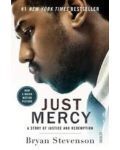
Stevenson, Bryan. Just Mercy: A Story of Justice and Redemption (Spiegel & Grau, 2015).
Bryan Stevenson was a young lawyer when he founded the Equal Justice Initiative, a legal practice dedicated to defending those most desperate and in need: the poor, the wrongly condemned, and women and children trapped in the farthest reaches of our criminal justice system. One of his first cases was that of Walter McMillian, a young man who was sentenced to die for a notorious murder he insisted he didn’t commit. The case drew Bryan into a tangle of conspiracy, political machination, and legal brinksmanship—and transformed his understanding of mercy and justice forever.
Just Mercy is at once an unforgettable account of an idealistic, gifted young lawyer’s coming of age, a moving window into the lives of those he has defended, and an inspiring argument for compassion in the pursuit of true justice.

Walker, David. Appeal to the Coloured Citizens of the World (Martino Fine Books, 2015).
2015 Reprint of Third and Last edition of 1830. David Walker was an outspoken African-American abolitionist and anti-slavery activist.
In 1829, while living in Boston, Massachusetts, he first published his famous "Appeal," a call for black unity and self-help in the fight against oppression and injustice. The work brought attention to the abuses and inequities of slavery and the obligation of individuals to act responsibly for racial equality, according to religious and political tenets.
At the time, some people were outraged and fearful of the reaction that the pamphlet would have. Many abolitionists thought the views were extreme. Historians and liberation theologians cite the "Appeal" as an influential political and social document of the 19th century. Walker exerted a radicalizing influence on the abolitionist movements of his day and inspired future black leaders and activists.

Walker, Samuel and Spohn, Cassia. The Color of Justice: Race, Ethnicity, and Crime in America (Cengage Learning, 2011).
Comprehensive and balanced, The Color of Justice is the definitive book on current research and theories of racial and ethnic discrimination within America's Criminal Justice system. The best and the most recent research on patterns of criminal behavior and victimization, police practices, court processing and sentencing, the death penalty, and correctional programs are covered giving students the facts and theoretical foundation they need to make their own informed decisions about discrimination in the system.
Uniquely unbiased, The Color of Justice makes every effort to incorporate discussion of all major race groups found in the United States.
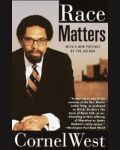
West, Cornel. Race Matters (Beacon Press, 1993).
Race Matters contains West's most powerful essays on the issues relevant to black Americans today: despair, black conservatism, black-Jewish relations, myths about black sexuality, the crisis in leadership in the black community, and the legacy of Malcolm X. And the insights that he brings to these complicated problems remain fresh, exciting, creative, and compassionate.
Now more than ever, Race Matters is a book for all Americans, as it helps us to build a genuine multiracial democracy in the new millennium.
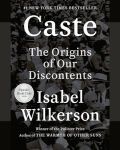
Wilkerson, Isabel. Caste: The Origins of Our Discontents (Random House, 2020).
In this brilliant book, Isabel Wilkerson gives us a masterful portrait of an unseen phenomenon in America as she explores, through an immersive, deeply researched narrative and stories about real people, how America today and throughout its history has been shaped by a hidden caste system, a rigid hierarchy of human rankings.
Beautifully written, original, and revealing, Caste: The Origins of Our Discontents is an eye-opening story of people and history, and a reexamination of what lies under the surface of ordinary lives and of American life today.

Yosso, Tara. Critical Race Counterstories along the Chicana/Chicano Educational Pipeline (Teaching/Learning Social Justice) (Routledge, 2005).
Chicanas/os are part of the youngest, largest, and fastest growing racial/ethnic 'minority' population in the United States, yet at every schooling level, they suffer the lowest educational outcomes of any racial/ethnic group.
Using a 'counterstorytelling' methodology, Tara Yosso debunks racialized myths that blame the victims for these unequal educational outcomes and redirects our focus toward historical patterns of institutional neglect. She artfully interweaves empirical data and theoretical arguments with engaging narratives that expose and analyse racism as it functions to limit access and opportunity for Chicana/o students.
By humanising the need to transform our educational system, Yosso offers an accessible tool for teaching and learning about the problems and possibilities present along the Chicano/a educational pipeline.
Fiction

Gyasi, Yaa. Homegoing: A Novel (Knopf, 2016)
The unforgettable New York Times best seller begins with the story of two half-sisters, separated by forces beyond their control: one sold into slavery, the other married to a British slaver.
Written with tremendous sweep and power, Homegoingtraces the generations of family who follow, as their destinies lead them through two continents and three hundred years of history, each life indeliably drawn, as the legacy of slavery is fully revealed in light of the present day.
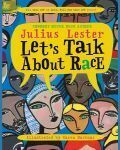
Lester, Julius. Let’s Talk About Race (Amistad 2008).
In this acclaimed book, the author of the Newbery Honor Book To Be a Slave shares his own story as he explores what makes each of us special. Karen Barbour's dramatic, vibrant paintings speak to the heart of Lester's unique vision, truly a celebration of all of us.
"This stunning picture book introduces race as just one of many chapters in a person's story"
~ School Library Journal
"Lester's poignant picture book helps children learn, grow, discuss, and begin to create a future that resolves differences"
~ Children's Literature
Julius Lester says, "I write because our lives are stories. If enough of these stories are told, then perhaps we will begin to see that our lives are the same story. The differences are merely in the details."
I am a story. So are you. So is everyone.
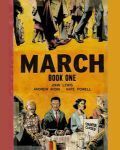
Lewis, John, Aydin, Andrew, and Powell, Nate. March (Top Shelf Productions, 2016).
March does for the Civil Rights struggle what Art Spiegelman's Maus did for the Holocaust: shine a light on the darkest corners of the history of the 20th century—when the human race collectively realized it had reached the outer limits of its own humanity and stepped back from the abyss—rendering it knowable, and thereby unrepeatable, for children of all ages, in perpetuity."
~ Esquire
The award-winning, #1 New York Times bestselling trilogy is complete! Celebrate with this commemorative set containing all three volumes of March in a stunning new slipcase designed by Nate Powell and Chris Ross and colored by José Villarrubia. -- a slipcased set of March: Book One, March: Book Two, & March: Book Three.
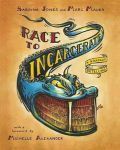
Mauer, Marc and Jones, Sabrina. Race to Incarcerate: A Graphic Retelling (The New Press, 2013).
More than 2 million people are now imprisoned in the United States, producing the highest rate of incarceration in the world. How did this happen? As the director of The Sentencing Project, Marc Mauer has long been one of the country’s foremost experts on sentencing policy, race, and the criminal justice system.
His book Race to Incarcerate has become the essential text for understanding the exponential growth of the U.S. prison system; Michelle Alexander, author of the bestselling The New Jim Crow, calls it "utterly indispensable."
Now, Sabrina Jones, a member of the World War 3 Illustrated collective and an acclaimed author of politically engaged comics, has collaborated with Mauer to adapt and update the original book into a vivid and compelling comics narrative. Jones's dramatic artwork adds passion and compassion to the complex story of the penal system’s shift from rehabilitation to punishment and the ensuing four decades of prison expansion, its interplay with the devastating "War on Drugs," and its corrosive effect on generations of Americans.
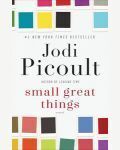
Picoult, Jodi. Small Great Things: A Novel (Ballantine Books 2016)
Ruth Jefferson is a labor and delivery nurse at a Connecticut hospital with more than twenty years’ experience. During her shift, Ruth begins a routine checkup on a newborn, only to be told a few minutes later that she’s been reassigned to another patient. The parents are white supremacists and don’t want Ruth, who is African American, to touch their child. The hospital complies with their request, but the next day, the baby goes into cardiac distress while Ruth is alone in the nursery. Does she obey orders or does she intervene?
Ruth hesitates before performing CPR and, as a result, is charged with a serious crime. Kennedy McQuarrie, a white public defender, takes her case but gives unexpected advice: Kennedy insists that mentioning race in the courtroom is not a winning strategy. Conflicted by Kennedy’s counsel, Ruth tries to keep life as normal as possible for her family—especially her teenage son—as the case becomes a media sensation. As the trial moves forward, Ruth and Kennedy must gain each other’s trust, and come to see that what they’ve been taught their whole lives about others—and themselves—might be wrong.
With incredible empathy, intelligence, and candor, Jodi Picoult tackles race, privilege, prejudice, justice, and compassion—and doesn’t offer easy answers. Small Great Things is a remarkable achievement from a writer at the top of her game.
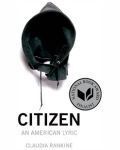
Rankine, Claudia. Citizen: An American Lyric (Graywolf Press, 2014).
Claudia Rankine's bold new book recounts mounting racial aggressions in ongoing encounters in twenty-first-century daily life and in the media. Some of these encounters are slights, seeming slips of the tongue, and some are intentional offensives in the classroom, at the supermarket, at home, on the tennis court with Serena Williams and the soccer field with Zinedine Zidane, online, on TV-everywhere, all the time.
The accumulative stresses come to bear on a person's ability to speak, perform, and stay alive. Our addressability is tied to the state of our belonging, Rankine argues, as are our assumptions and expectations of citizenship. In essay, image, and poetry, Citizen is a powerful testament to the individual and collective effects of racism in our contemporary, often named "post-race" society.
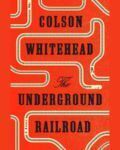
Whitehead, Colson. The Underground Railroad (Doubleday Books, 2016).
The Underground Railroad is a novel by American author Colson Whitehead. It tells the story of Cora and Caesar, two slaves who make a bid for freedom from their Georgia plantations by following the Underground Railroad.

